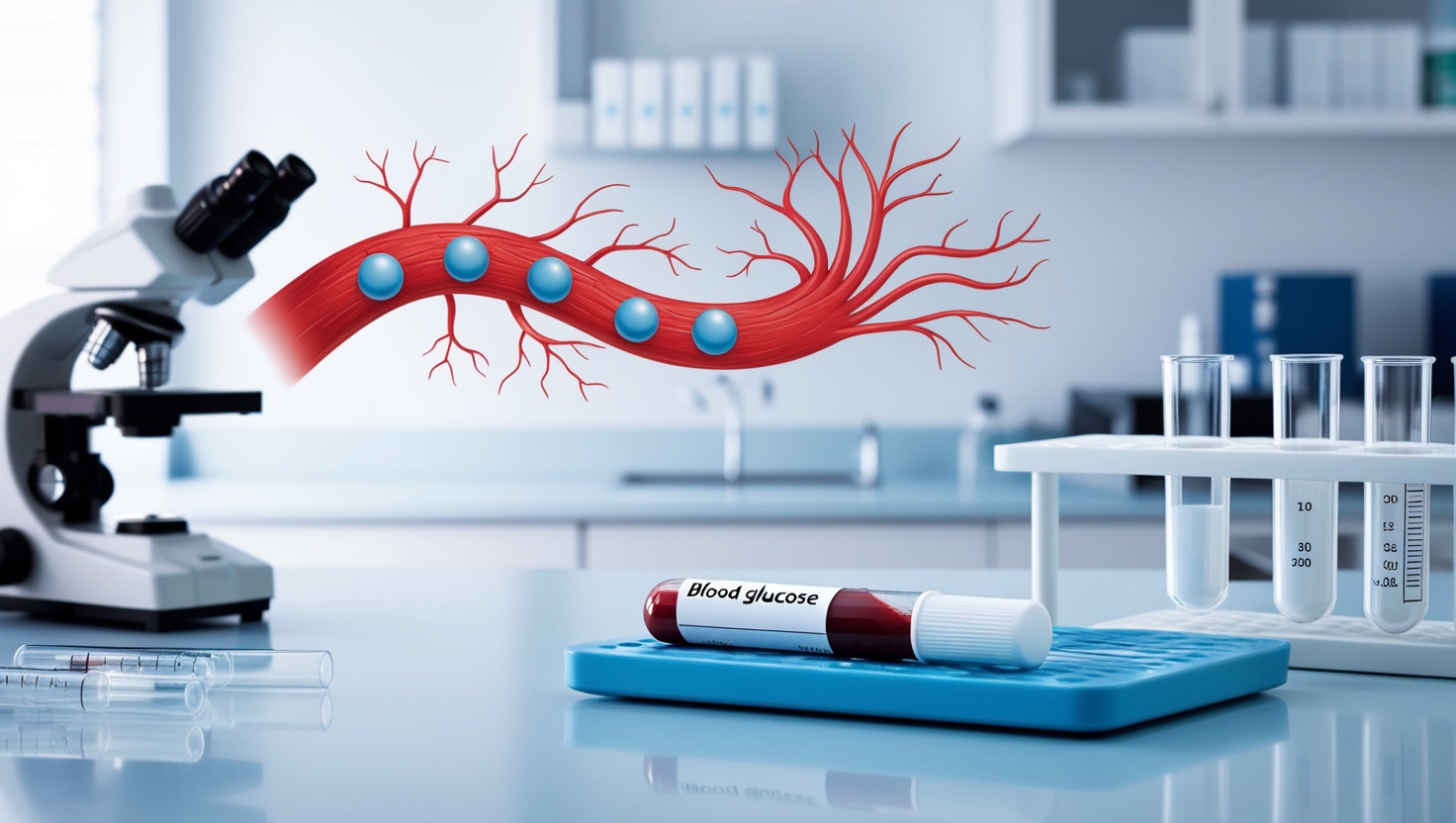
Test Name and Purpose
The glucose test measures blood sugar levels to evaluate how the body regulates glucose, the primary source of energy for cells. It is crucial for diagnosing and monitoring metabolic conditions such as diabetes, prediabetes, and hypoglycemia. These tests also assess glucose tolerance and the effectiveness of diabetes management plans, helping healthcare providers tailor treatments to maintain optimal blood sugar levels.
Specific glucose tests—like fasting glucose, random glucose, and post-meal glucose measurements—provide insights into different aspects of glucose metabolism and are critical for identifying abnormalities early.
Why the Test is Ordered
Healthcare providers may order glucose tests for individuals showing symptoms of abnormal blood sugar levels, such as:
- Excessive thirst (polydipsia)
- Frequent urination (polyuria)
- Fatigue
- Unexplained weight loss
These tests are commonly recommended in the following situations:
- High-Risk Populations:
- Individuals with a family history of diabetes.
- Those who are overweight or obese.
- People leading sedentary lifestyles or with poor dietary habits.
- Pregnant Women:
- To screen for gestational diabetes, a condition that can develop during pregnancy and affect both mother and baby.
- Ongoing Monitoring:
- For patients with diagnosed diabetes to evaluate the effectiveness of treatments such as insulin or oral medications.
- For assessing long-term glucose control alongside tests like HbA1c.
- Preventive Care:
- As part of routine check-ups for individuals at risk of developing diabetes, including those with prediabetes or metabolic syndrome.
How the Test Works
- Sample Collection:
- A blood sample is obtained either by drawing blood from a vein (venipuncture) or through a quick finger prick for capillary blood testing.
- Analysis:
- The collected blood is analyzed in a laboratory or using point-of-care devices to measure glucose concentration.
- Types of Glucose Tests:
- Fasting Glucose: Measures baseline blood sugar levels after an overnight fast (typically 8–12 hours without food). This test reflects how the body maintains glucose levels in the absence of food.
- Random Glucose: Measures blood sugar at any point during the day, regardless of the last meal. It is used to assess overall glucose control and screen for significant abnormalities.
- Post-Meal Glucose (1hr or 2hr after eating): Evaluates how efficiently the body manages glucose after consuming a meal. This is particularly useful in detecting impaired glucose tolerance or monitoring meal-specific glucose spikes in diabetes management.
Preparation and Procedure
Preparation
- Fasting Glucose Tests:
- Fast for 8–12 hours before the test. Only water is allowed during this period.
- Avoid alcohol or high-sugar foods the night before the test.
- Random or Post-Meal Glucose Tests:
- No specific fasting is required for random glucose tests.
- For post-meal tests, consume your regular meal before the specified testing interval (e.g., 1 hour or 2 hours after eating).
- Avoid unusually sugary or high-carbohydrate meals prior to the test to avoid skewed results.
- Medication Adjustments:
- Certain medications (e.g., steroids, diuretics, or antipsychotics) can affect blood sugar levels.
- Always consult your doctor about whether to adjust medications before the test.
Procedure
- Blood Sample Collection:
- For venous blood tests:
- The healthcare provider cleans the puncture site (typically the arm) with an antiseptic.
- A sterile needle is inserted into a vein, and blood is drawn into a collection tube.
- For capillary blood tests:
- A finger is cleaned, and a lancet is used to prick the skin. A small droplet of blood is collected for analysis.
- For venous blood tests:
- Sample Analysis:
- The collected blood is sent to a laboratory or analyzed on-site using specialized glucose testing equipment.
- Time Taken:
- The entire process usually takes a few minutes. Results from lab-based tests may take a few hours to 24 hours, whereas point-of-care devices provide immediate results.
Normal and Abnormal Results
- Reference Ranges:
- Fasting glucose:
- Normal: 3.9–5.5 mmol/L
- Prediabetes: 5.6–6.9 mmol/L
- Diabetes: ≥7.0 mmol/L
- Random glucose:
- Normal: <7.8 mmol/L
- Prediabetes: 7.8–11.0 mmol/L
- Diabetes: ≥11.1 mmol/L
- 1hr or 2hr Post-Meal Glucose:
- Normal: <7.8 mmol/L
- Diabetes: ≥11.1 mmol/L
- Fasting glucose:
- Abnormal Results:
- High levels (Hyperglycemia): May indicate diabetes, stress, infection, or other endocrine disorders like Cushing’s syndrome.
- Low levels (Hypoglycemia): Could signify adrenal insufficiency, insulin overdose, or other metabolic disorders.
Implications and Next Steps
Normal Results
- If glucose levels fall within the normal range, this typically indicates proper blood sugar regulation.
- Healthcare providers may encourage continued healthy lifestyle practices, including a balanced diet, regular exercise, and routine monitoring, to maintain optimal glucose levels.
Abnormal Results
Abnormal glucose test results—either high (hyperglycemia) or low (hypoglycemia)—require further evaluation to determine the cause and severity.
- Follow-Up Testing:
- HbA1c Test: Provides an average of blood glucose levels over the past 2–3 months.
- Oral Glucose Tolerance Test (OGTT): Assesses how the body processes glucose over time.
- Continuous Glucose Monitoring (CGM): Offers real-time insights into daily glucose fluctuations.
- Management Adjustments:
- High Glucose Levels:
- Treatment plans may involve adjustments to medications (e.g., insulin or oral hypoglycemics).
- Healthcare providers may recommend a dietitian to create a balanced meal plan or an exercise program.
- Low Glucose Levels:
- Immediate interventions like dietary changes or adjustments in diabetes medications may be necessary.
- High Glucose Levels:
- Specialist Referral:
- Referral to an endocrinologist may be necessary for advanced care, especially in complex cases like Type 1 diabetes, gestational diabetes, or diabetes with complications.
Importance of Action
Early detection and appropriate interventions based on glucose test results can prevent complications like cardiovascular disease, kidney damage, nerve damage, or severe hypoglycemia. Patients are advised to discuss their results with a healthcare provider for personalized guidance and to establish a clear treatment plan.
Common Questions
1. How accurate is the test?
Modern laboratory methods and point-of-care devices provide high accuracy in measuring glucose levels. However, several factors can influence test results, including:
- Recent food or drink intake (for non-fasting tests).
- Stress or illness, which can temporarily elevate glucose levels.
- Improper preparation, such as not fasting as instructed.
Always ensure proper test preparation to improve result reliability.
2. Are there risks involved?
The risks associated with glucose testing are minimal and include:
- Venipuncture: Slight bruising, swelling, or tenderness at the site of blood draw.
- Finger Prick: Mild discomfort or soreness at the prick site.
Serious complications are extremely rare, and these minor side effects usually resolve quickly.
3. How long do results take?
- Point-of-Care Testing: Results from finger-prick devices are available almost instantly.
- Lab-Based Testing: Results typically take a few hours to 24 hours, depending on the facility.
For urgent cases, providers may prioritize testing to deliver results more quickly.
Conclusion
Glucose testing is an essential diagnostic and monitoring tool for detecting blood sugar irregularities and managing conditions like diabetes. It provides valuable insights into your metabolic health, helping healthcare providers develop personalized care plans.
While understanding your results is important, it’s equally vital to consult a healthcare provider for accurate interpretation and guidance. They can explain what your results mean, address any concerns, and recommend appropriate steps.
Early detection and timely intervention can prevent complications, improve quality of life, and promote long-term health. Take charge of your health by following medical advice and maintaining regular check-ups.
